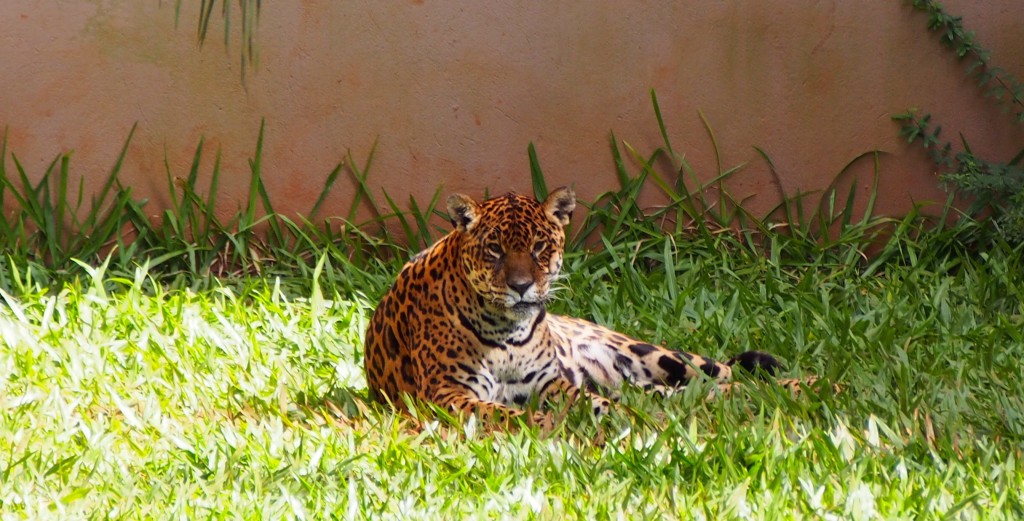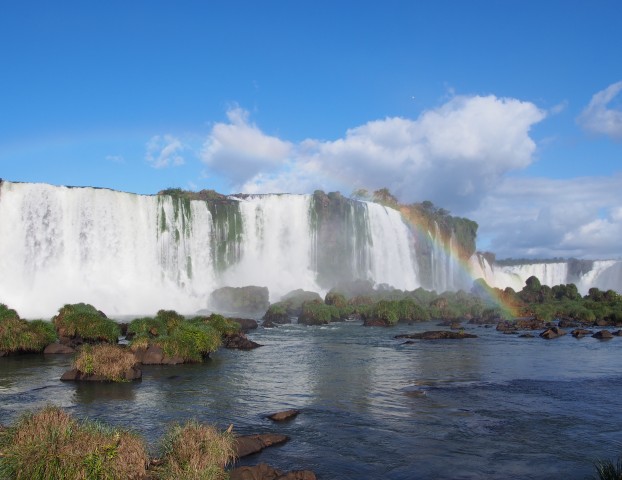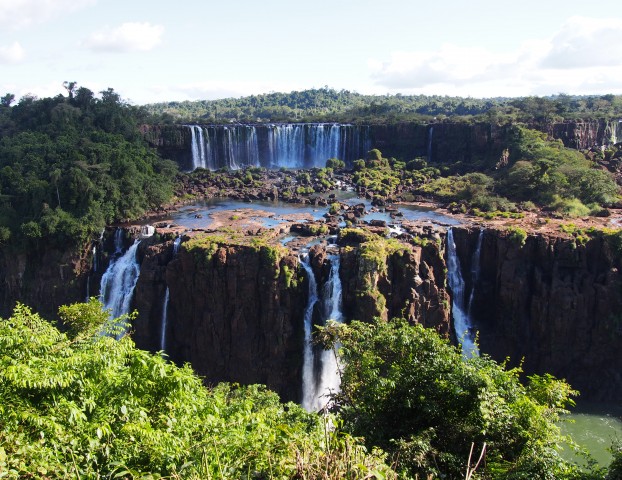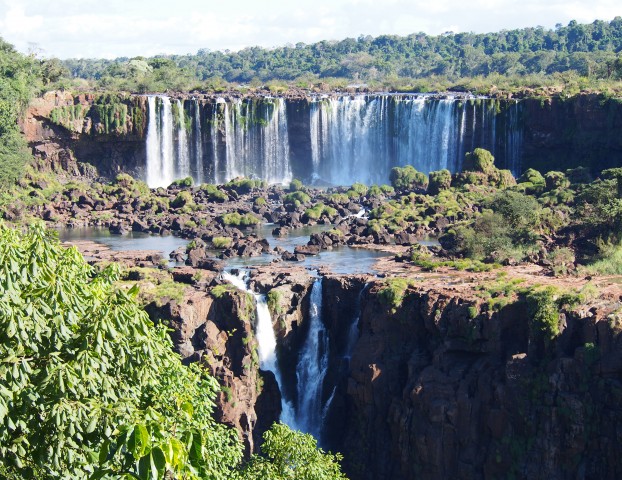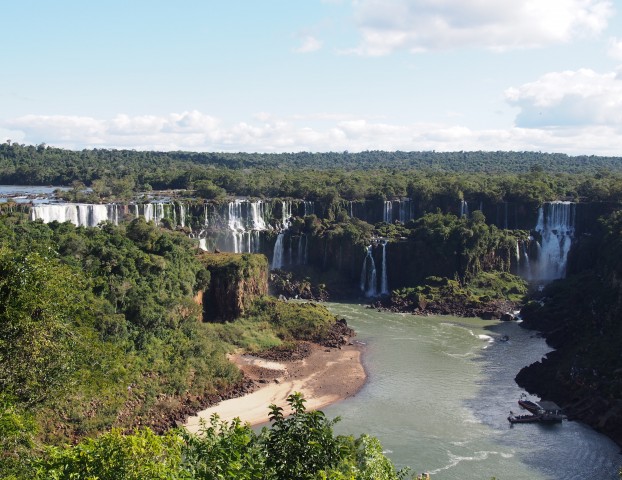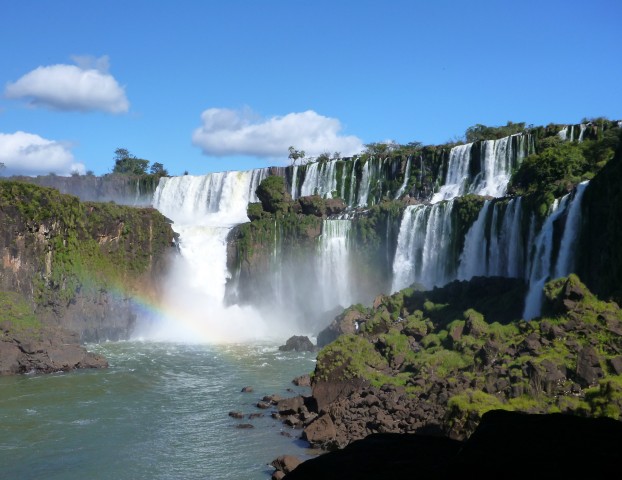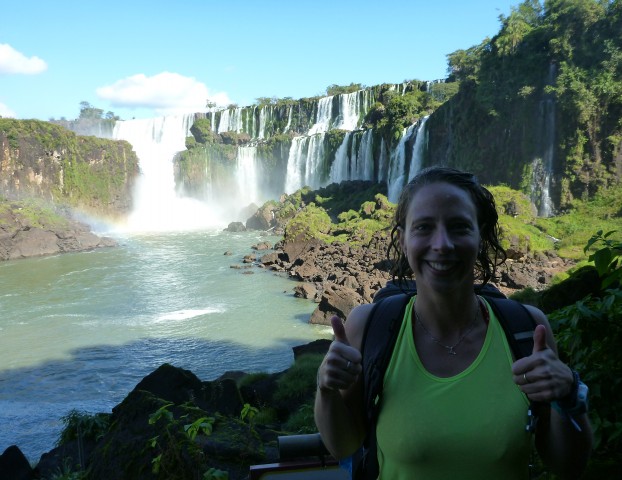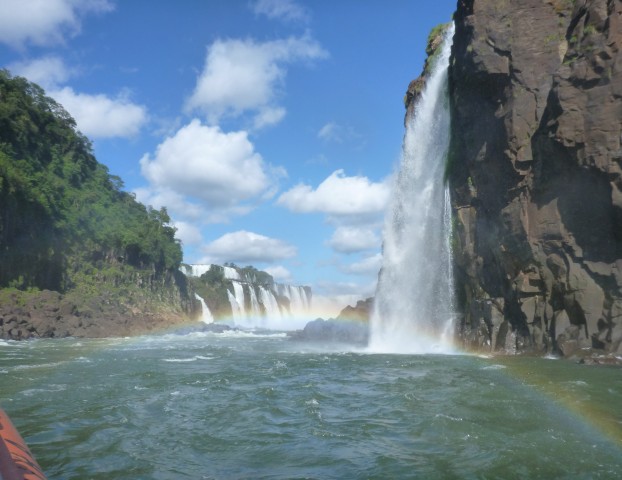 Foz Do Iguaçu is the town in Brazil that is closest to the Iguassu Falls. The name of the town means meeting of the rivers and has a population of approximately 30,000.
Foz Do Iguaçu is the town in Brazil that is closest to the Iguassu Falls. The name of the town means meeting of the rivers and has a population of approximately 30,000.
Iguassu Falls
The falls, sometimes spelled Iguaçu, Iguazu or Iguassu are one of the new seven natural wonders of the world. Iguassu means great or big water and rightfully so! The average water flow of the falls is between 900-1500 m3 per second.
The Iguassu Falls are referred to as falls because there are multiple waterfalls along the river. The main fall is the Devil’s Throat.
The falls themselves border on Brazil and Argentina. 75% of the waterfalls are in Argentina and the remaining 25% in Brazil. The vast majority of the UNESCO protected national park is in Brazil and is 185,000 hectares in size.
The national park is an amazingly diverse area, home to: 72 species of mammals; 300 species of birds; 57 species of reptiles; 27 species of amphibians; 800 species of butterflies and innumerable species of insects.
The Brazilian side of the falls is generally where you go to get a great view of the falls. The Argentinian side is where you can really visit the falls; stand on platforms above them, hike the trails between them and even jet boat under them. The site gets an average of 1.5 million visitors per year; the record number of visitors in one day on the Brazilian side was 17,000.
If you are going to the falls then I would say you need at least two days, though I know I could happily spend even longer there. You don’t need a whole day for the Brazilian side, but you certainly need at least a full day on the Argentinian side.
Some tips for visiting the falls:
- do the helicopter ride over the falls, it’s absolutely worth the money
- go to the Argentinian side very early in the morning and head straight up the upper trail to the Devil’s Throat. Later in the day it will be much too over crowded
- do the jet boat ride up the river and under the falls, it’s AMAZING and SOOOOOO MUCH FUN!!! (but pack a spare pair of clothes, because not a stitch will be dry after the boat ride!)
- don’t carry a plastic bag or food with you, the locals animals, coatiemundi, will try to thieve it and they are terrifying! (Ok, everyone knows that I am terrified of basically all animals, but it was genuinely terrifying to have a pack of raccoon type rodents trying to get at you!!)
I’m once again at a bit of a loss for words to describe the falls; they are amazing; sublime; powerful; breathtaking and almost every other superlative I can think of. The roar of the Devil’s Throat is deafening and its spray has you soaked in minutes, but you can’t look away from something so majestic. The power of the water is such a challenge to comprehend.
Itaipu Dam and Animal Sanctuary
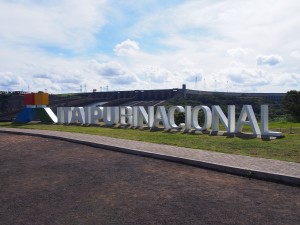 Half an hour out of Foz Do Iguaçu is the Itaipu Dam, which is the only binational place/company I have come across. The hydroelectric dam is one of the biggest in the world. It is 2.5kms wide and roughly 500metres high. It spans Brazil and Paraguay. While you can’t border cross through the dam, you can technically visit the other country without requiring a visa (this also means no passport stamp). The power produced belongs 50% to Brazil and 50% to Paraguay. Of it’s portion Paraguay uses 10% to power 95% of the country and sells the remaining power back to Brazil. The quick tour we did of the Dam was quite fascinating, but for us it was not the main attraction.
Half an hour out of Foz Do Iguaçu is the Itaipu Dam, which is the only binational place/company I have come across. The hydroelectric dam is one of the biggest in the world. It is 2.5kms wide and roughly 500metres high. It spans Brazil and Paraguay. While you can’t border cross through the dam, you can technically visit the other country without requiring a visa (this also means no passport stamp). The power produced belongs 50% to Brazil and 50% to Paraguay. Of it’s portion Paraguay uses 10% to power 95% of the country and sells the remaining power back to Brazil. The quick tour we did of the Dam was quite fascinating, but for us it was not the main attraction.
When anything is built, despite is being productive progress, there is always damage along the way. The creation of such a large dam, obviously had a big impact on the environment. To compensate a sanctuary was created nearby the dam with a focus on rehabilitating injured animals, regenerating forests, doing research into medical and scientific uses of plants, ecological sustainability; all the while running educational programs about all these issues as well.
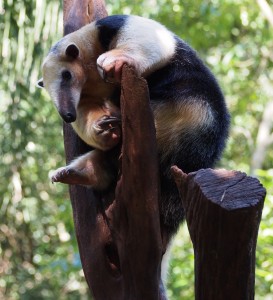 We had the opportunity to do a quick tour of the animal sanctuary. We weren’t able to see any animals that were very share or very injured as we could negatively impact them. However, we were able to see animals that were well on their way to recovery or being held for scientific and reproductive purposes.
We had the opportunity to do a quick tour of the animal sanctuary. We weren’t able to see any animals that were very share or very injured as we could negatively impact them. However, we were able to see animals that were well on their way to recovery or being held for scientific and reproductive purposes.
It was horrifying to hear the stories of some of the animals. There is particular breed of parrot, it is predominantly green with some other streaks of colour. Legally they cost $4000 reales to buy, but they can be bought on the black market for much less. People try to smuggle them into Brazil from Paraguay. One person who got caught had two plumbing pipes, he had filled them both up with tiny chicks of this type of parrot and poured in some alcohol (I can’t remember which type of spirit) to basically drug the birds to sleep, so they wouldn’t make noise as he tried to cross the border. Inside the pipes 70 chicks were discovered, only five of which survived. We were horrified to hear this, but thankful to hear that the Brazilian government has a very tough stance on the issue, the fines and jail terms are hefty.
Despite some horror stories, it was fantastic to hear just how much was being done to support the environment and the animals. There seem to be policies in place, that if you damage the environment in any way, you have to make up for it by affecting the environment positively. In our visit we were lucky enough to see happy and healthy animals, including an ocelot, ant-eaters, ferrets, capybara’s deer, monkeys, caymans, tapir, loads of different varieties of birds and snakes, and the highlight – a pair of jaguars.
